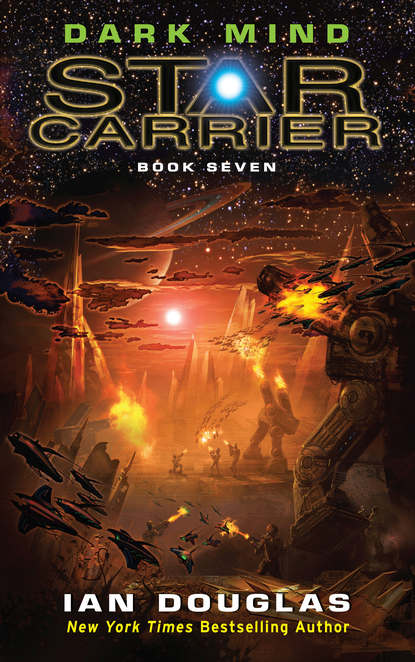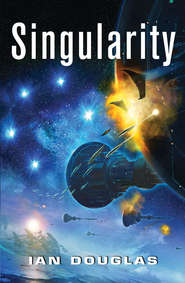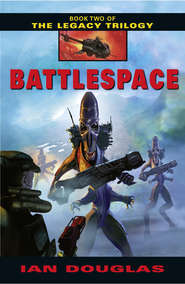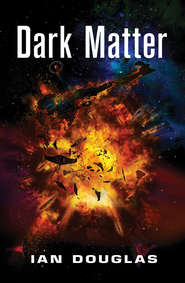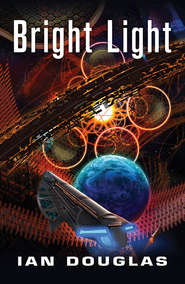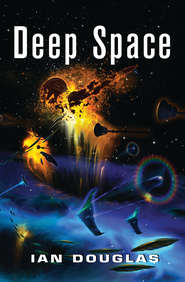По всем вопросам обращайтесь на: info@litportal.ru
(©) 2003-2025.
✖
Dark Mind
Настройки чтения
Размер шрифта
Высота строк
Поля
Chapter Eighteen (#litres_trial_promo)
Chapter Nineteen (#litres_trial_promo)
Chapter Twenty (#litres_trial_promo)
Chapter Twenty-one (#litres_trial_promo)
Chapter Twenty-two (#litres_trial_promo)
Chapter Twenty-three (#litres_trial_promo)
Chapter Twenty-four (#litres_trial_promo)
Chapter Twenty-five (#litres_trial_promo)
Chapter Twenty-six (#litres_trial_promo)
Epilogue (#litres_trial_promo)
By Ian Douglas (#litres_trial_promo)
About the Publisher (#litres_trial_promo)
Prologue (#ulink_2c7ddf9a-1b0b-5909-8630-1dfb36df5802)
It thought of itself as the “Consciousness,” and it was very, very old.
How old? There was no way even it could know the answer. Billions of years, certainly, as certain organic life-forms measured time … and possibly older than that, through an eternity spanning trillions of years and several universes.
Only recently had the Consciousness emerged into this latest, young and vital, universe, following the tug of gravity across the dimensional walls of the metaverse, seeking the siren call of Mind. Indeed, advanced intelligence had left numerous traces in this universe, and the Consciousness intended to find and merge with that intelligence … and assimilate it, molding it to the Consciousness’s will.
They’d entered the universe through a patently artificial gateway, a rapidly spinning rosette of black holes that served to tear multiple openings through the fabric of spacetime. That artifact itself was the most obvious evidence of local advanced intelligence and technology. The so-called Black Rosette was located at the center of what appeared to be a giant globular cluster of 10 million stars, but which in fact was the stripped-bare core of an ancient dwarf galaxy cannibalized by the far larger barred spiral known to a few of its inhabitants as the Milky Way.
A billion years before, that dwarf galaxy had been occupied by a consortium of intelligent species, a bewildering mélange of alien bioforms. Most had … passed on—there was no better term for it—entering their version of a technological singularity that had removed them from the mundane cosmos of matter. A few individuals had remained behind, survivors of the singularity that had reorganized themselves into a new civilization calling itself Sh’daar.
Kapteyn’s Star had been just one of the suns of that lost dwarf galaxy, the home of a race that had chosen to convert itself wholly into digital format, uploading some trillions of individuals into a series of circuits and metallic channels etched into the very rocks of their home planet. There, they passed the eons at a vastly reduced pace, experiencing a second or two for every thousand years that flickered past on the outside, in effect traveling swiftly into their own remote future. Within their digitized universe, they experienced near-infinite virtual vistas, worlds far richer, more detailed, and more rewarding than anything the natural cosmos had to offer.
Or they had until now.
Because the Consciousness was enveloping their entire cosmos, slowing a part of itself down to more easily interface with the digitized natives, and beginning the process of relentlessly drawing them into itself.
Chapter One (#ulink_9b5db633-b3f9-5dc9-9e0c-72f30f341247)
12 October 2425
Approaching Heimdall
Kapteyn’s Star
0840 hours, GMT
A quintet of sleek, Pan-European KRG-17 fighters fell past Bifrost, the sullen, red-banded, ice-ringed gas giant named for the Rainbow Bridge of Norse mythology. Kapitanleutnant Martin Schmidt tried boosting the gain on the incoming scanner data, but the receivers were already maxed out. Static crackled and hissed in his in-head feed. Radiation effects from the planet? Possibly. Bifrost’s field storms could get pretty bad sometimes.
But Schmidt was pretty sure that the interference was from something else. Not the random, natural hiss of charged particles accelerated by Bifrost’s magnetic fields, but something deliberate …
“Adler Eins Zu Himmelschloss,” he called. “Adler Eins Zu Himmelschloss.”
Static shrieked in reply.
He tried again. “Eagle One to Skycastle, Eagle One to Skycastle, please respond. What is the tacsit at Heimdall now? We’re blind out here. Over.”
Still nothing.
“What’s going on back there, Kapitanleutnant?” Leutnant Andrea Weidman, Eagle Five, called to him. “Ghosts?”
Ghosts referred to the unidentified craft that had been appearing in this star system for the past month or so, first singly, but then in ever-increasing numbers. That they were spacecraft of some sort was undeniable … as was the fact that they represented an unimaginably advanced technology. All attempts to make direct contact with them, however, had failed so far.
“Possibly,” Schmidt replied. “That’s what we’re here to find out. Adler Flight … shift to stealth mode and arm weapons.”
The black surfaces of the fighters rippled and shifted as the craft adjusted their outer shapes from winged to teardrops. While not optically invisible, their hull nanoflage absorbed nearly every whisper of incoming radar pulse, every bit of light. Their environmental systems shifted into high gear as well, storing the rising internal heat rather than radiating it as infrared.
The five Pan-European fighters skimmed in beneath Bifrost’s system of broad, brilliant rings, each circle eerily reminiscent of the concentric grooves of an old-fashioned twentieth-century phonograph record. Kapteyn’s Star, the local red dwarf sun, was a bright red pinpoint shining through the rings, wan and distant. Three and a half astronomical units from the giant Bifrost, it contributed little light and less heat.
“Himmelschloss,” Schmidt called. “Do you copy?” The message was tight beamed and shielded, but Schmidt knew they would have to switch to radio silence soon.
Still nothing but static. Himmelschloss—“Sky Castle”—was the Pan-European monitor that had brought them here, to the Kapteyn’s system, now following a few hundred thousand kilometers astern and shielded from Heimdall by the vast, sullen, and storm-shrouded bulk of Bifrost.
“If it’s ghosts, Marty,” Leutnant Herko Dobrindt said over a private com channel, “we’re not going to be able to fight them. Not with these antiques.”
Schmidt had just been thinking the same thing. KRG-17 Raschadler fighters were a Franco-German design twenty years out of date and well past their prime. They were still effective space fighters—not as maneuverable as the latest North-American fighters, perhaps, but they carried the latest weaponry. Schmidt doubted, however, that even the most up-to-date KRG-40 Raumsturm would have a chance against those …
Whatever those flying things were.
An orange crescent appeared ahead, beyond the broad plane of the giant’s rings. The world was Heimdall, a moon the size of Earth, kept warm this far from its diminutive sun by tidal stresses with Bifrost. The surface temperature now was a few degrees below the freezing point of water. At one time, though, a billion years earlier—so the scientists had told them—Heimdall had been warm and Earthlike …
Heimdall, like its sun, was very old.
“I’m picking up ghosts up there,” Leutnant Gerd Heller announced. “My God, look at them all!”
“Record everything,” Schmidt ordered. “Everything.”
Bifrost appeared to be enveloped in a hazy, filmy light. At first, Schmidt assumed he was seeing the world’s aurorae—Heimdall’s strong magnetic field interacted wildly with the charged-particle storms swirling about Bifrost, and the world’s icy surface often was bathed in a lambent, electric glow—but a closer inspection showed that the glow was in fact caused by planet-girdling clouds: a haze of apparent dust motes at this range, but consisting of some trillions of discrete objects ranging from millimeters wide up to several meters or more across.
And … there was something more. A lot more. Dimly glimpsed, so faint that Schmidt thought that they must be a trick of his eyes, there were shapes. Huge shapes dwarfing Heimdall, dwarfing even massive Bifrost. From his vantage point, skimming along beneath Bifrost’s rings, it seemed as though Heimdall was suspended within a vast and far-flung web so insubstantial, so gossamer, it was difficult to tell if it was there at all.
And yet it was filling all of space ahead …
“Kapteyn Orbital,” Dobrindt said. “It’s gone!”





